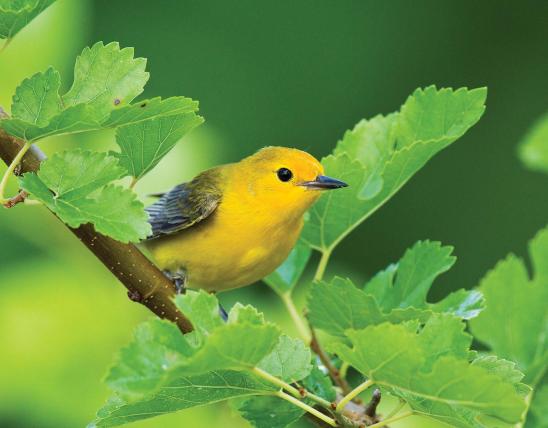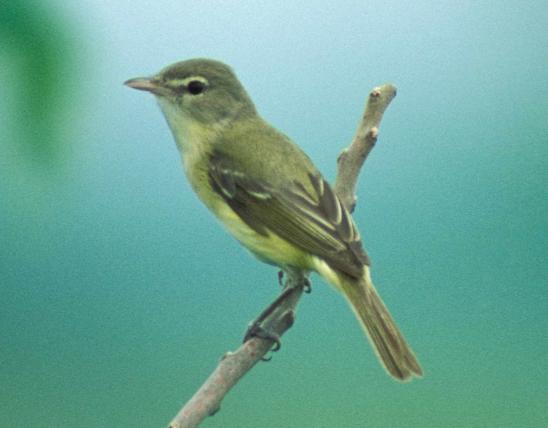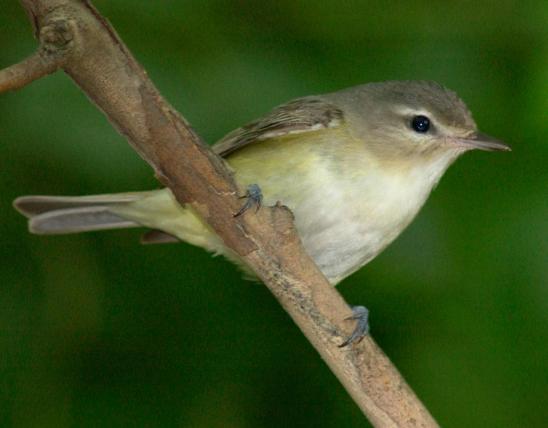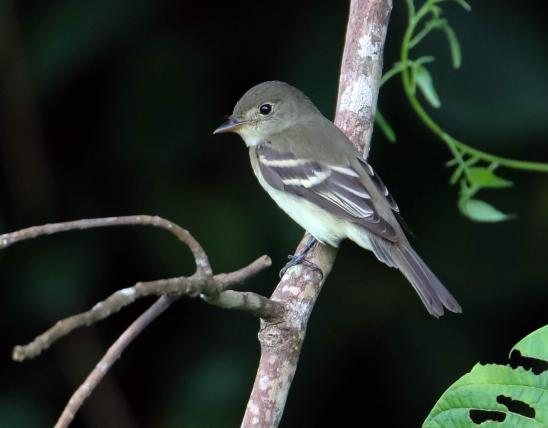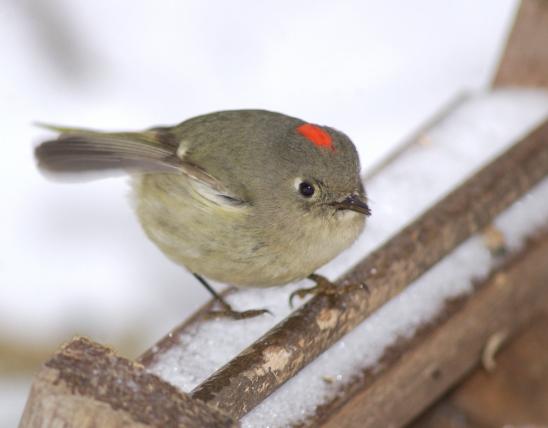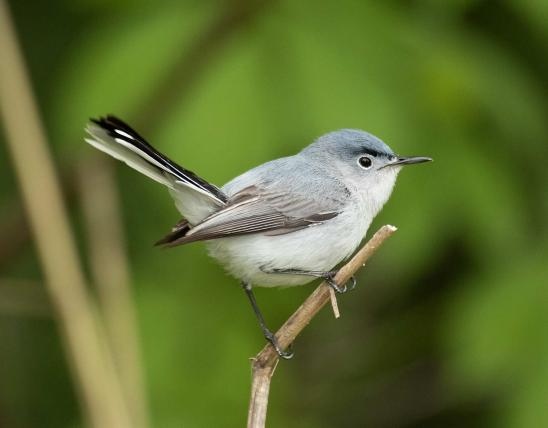
The bay-breasted warbler adult breeding male has a black head with a chestnut crown, throat, and sides; the sides of neck and underparts are buffy. The adult female is similar but lacks the black head and is paler. Both have 2 white wing bars and dark legs. Song is a rapid series of double notes, all on the same, high pitch: tseetsy-tseetsy-tseetsy-stee, or sweeswee-sweeswee-sweeswee-swee.
Similar species: Although adult bay-breasted warblers in breeding plumage are easy to identify, nonbreeding males, breeding and nonbreeding females, and immature males present an identification challenge. Blackpoll warblers have streaking on their breasts. Pine warblers show a stark border between yellow throat and dark cheeks; also, the lower belly and undertail coverts on pine warblers are white and not buffy. A discussion of all the fine points is beyond the scope of this introductory field guide. Keep in mind the key features below.
Length: 5½ inches (tip of bill to tip of tail).

Statewide, as a migrant.
Habitat and Conservation
This is one of more than 300 North American bird species threatened by global climate change. Climate models indicate that the zone of favorable weather conditions for this species' breeding territory is moving northward from the current, long-established breeding territory. It is unknown if the birds, the spruce forests, and their budworm food can all move northward, too.
Food
The bay-breasted warbler moves through the trees, hopping from branch to branch, feeding on insects. The spruce budworm is a vital food in their breeding territory; during outbreaks of that caterpillar, bay-breasted warbler populations boom. Then, when the insect population drops, the warbler populations decline. Overall declines in this warbler's numbers may be due to pesticide spraying to control their favorite food on their breeding grounds.
Status
Uncommon transient. Genus name: This and nearly 30 other wood-warblers used to be in the genus Dendroica, but evidence from genetic research showed that the genus could not logically be kept separate from genus Setophaga. Today, all the Dendroica warblers are now in genus Setophaga.
Life Cycle
This warbler migrates from Panama, Venezuela, and Colombia through the entire eastern United States to nest in spruce-fir forests in Canada and the far northern United States. It is present in Missouri from late April through the end of May, and from early August through early October. Cup nests are built in spruce trees, made of twigs, grasses, rootlets, hairs, spider web, mosses, and other fine materials. A clutch comprises 4–7 eggs, which are incubated 12–13 days. The young start leaving the nest 11–12 days after hatching.
Human Connections
Difficult-to-identify fall warblers present a challenge to birders, but it's part of our human nature to rise to challenges! A thornier problem involves long-term conservation challenges, which involve education, foresight, and economic and political willpower. Humans have a voice in public policy, but warblers do not.
Ecosystem Connections
The close relationships among the spruce forests, the spruces' budworm pests, and the bay-breasted warbler's budworm diet and spruce-tree nesting sites, beautifully demonstrate the interconnections of nature.




About 350 species of birds are likely to be seen in Missouri, though nearly 400 have been recorded within our borders. Most people know a bird when they see one — it has feathers, wings, and a bill. Birds are warm-blooded, and most species can fly. Many migrate hundreds or thousands of miles. Birds lay hard-shelled eggs (often in a nest), and the parents care for the young. Many communicate with songs and calls.
























